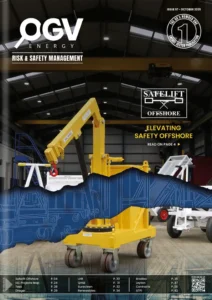Energy companies have been urged to follow new guidance to speed up the rollout of improved technologies for decommissioning oil and gas wells.
Launched by the Net Zero Technology Centre (NZTC) in partnership with engineering consultancy Astrimar, the framework comes as the UK and other countries ramp up efforts to cut costs and reduce the environmental impact of ageing energy assets.
The Aberdeen-based centre said the current pace of deployment “remains incredibly slow” as the scale of the challenge grows.
NZTC and Astrimar have set out a clear, evidence-based process to assess whether materials can safely and permanently seal wells that are no longer in use. Well abandonment is one of the most costly aspects of decommissioning.
The six-step framework supports safe and confident use through a structured qualification process – the first guidance focused specifically on well plug and abandonment (P&A).
It helps users identify risks, build a strong evidence base, and streamline approvals to accelerate the safe deployment of new solutions.
Around 2,000 wells in the North Sea alone are expected to shut down over the next decade. The aim is to reduce costs for both operators and taxpayers, with public funding supporting decommissioning through tax reliefs.
Other countries, including the US, Norway and Australia, are also tackling rising costs and environmental issues related to well decommissioning across their energy sectors as part of their transitions.
More than 14,000 unplugged non-producing wells remain in the Gulf of Mexico, while around 7,000 wells across Asia Pacific are due for decommissioning by 2030.
Australia faces a major offshore oil and gas decommissioning challenge, with costs estimated at US$40.5 billion over the next 50 years. This covers more than 1,000 wells as well as related infrastructure, highlighting the scale of the task.
Long-term safety and environmental protection are critical as the industry moves away from traditional cement-based barriers.
New technologies using low melting point alloys, resins, polymers and epoxies are emerging, but face challenges demonstrating their effectiveness and reliability.
The framework also reflects input from operators, regulators and technology developers, and draws on international guidelines and standards such as DNV RP A203 and API RP 17Q, which are widely used across the energy sector.
It stems from NZTC’s Wells Decommissioning Collaboration, which aims to speed up testing and adoption of P&A technologies with a goal to cut costs by 35 per cent and halve emissions by 2035.
NZTC and its partners encourage companies to apply the framework to help speed the safe deployment of new solutions.
Lewis Harper, programme manager at NZTC, said:
“Well decommissioning is an increasingly urgent global issue as maturing basins seek ways to cut costs, reduce emissions and improve efficiency.
“The only way to achieve that is through new technology, but the pace of developing and deploying new solutions remains incredibly slow.
“This guidance will help speed up the safe adoption of innovative technologies, giving operators and regulators the confidence to move faster.
“By managing performance to stringent standards, the adoption of new materials should become easier and more reliable.
“Created with input from operators, regulators and industry experts, the guidance shows the strength of our partnership approach.
“It ensures solutions meet everyone’s needs and supports faster and safer adoption.
“This framework gives the industry the tools to tackle well decommissioning challenges with greater confidence.”
The framework, with tools to help assess readiness and manage risks, is available to download from NZTC’s website here.
“When you share your news through OGV, you’re not just getting coverage – you’re getting endorsed by the energy sector’s most trusted voice.”














